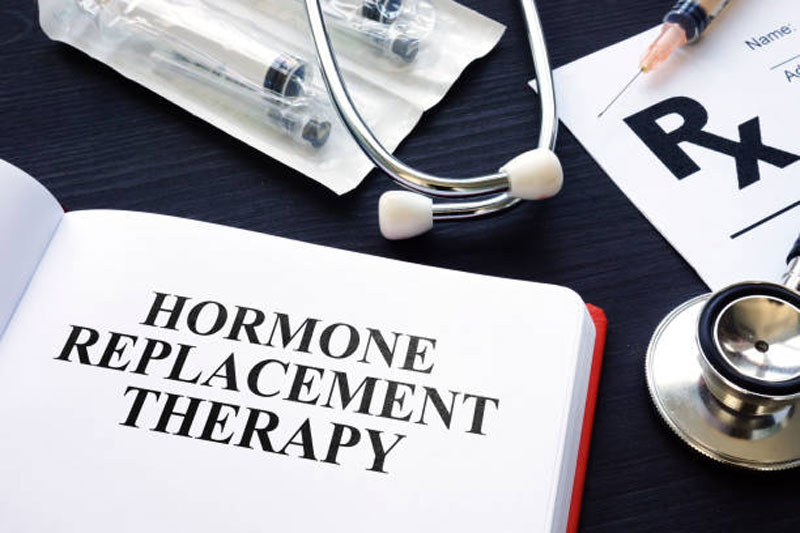
Estrogen and progesterone start declining almost eight years before menopause. The exercise isn’t easy.
First, the hormonal imbalance takes a toll on your physical and emotional well-being. Some of these effects include painful intercourse, night sweats, mood swings, and sleeping problems.
Thanks to technology, you don’t have to face this alone. Hormone replacement therapy (HRT) is designed to help you out.
What is HRT?
It’s a hormone that your doctor prescribes to supplement the hormones that your body isn’t producing anymore. In most cases, it’s a combination of estrogen and progesterone hormones.
The estrogen hormone is what helps with symptoms like vaginal dryness and hot flashes. Progesterone acts to protect against bone loss and uterine cancer.
If you’re going through the menopause stage, use these contacts here to seek diagnosis and treatment. A competent and certified menopause doctor should be able to handle your condition.
The Different Types of HRT
There are two main types of hormonal replacement treatments. First, it can be systemic where the drug travels through your bloodstream. It can also be local, meaning that it only affects a single area of your body.
The systemic HRT helps with night sweats, hot flashes, and vaginal symptoms like pain during intercourse and dryness. The HRT comes in the form of pills, sprays, gels, and shots.
However, if your main issue is vaginal discomfort, local HRT is your best option. It comes in the form of rings, tablets, and creams that you put in your vagina.
What Are the Possible Side Effects?
For most people, hormone replacement therapy works just fine. But for some, they’re likely to have side effects.
The potential side effects include:
- Blurry vision
- Breast soreness
- Bloated stomach
- Nausea
- Headaches
- Dizziness
- Vaginal bleeding
If you notice any postmenopausal bleeding or blood spot, tell your doctor.
What Factors Should You Consider Before Taking HRT?
It’s no doubt that HRT works magic to ease menopausal symptoms. However, it might make you susceptible to other health conditions. Such include deep vein thrombosis, stroke, and heart diseases.
Further, women with these conditions are advised against using HRT.
- Problems with vaginal bleeding
- Expectant moms
- Breast, or ovarian cancer
- History of stroke or heart attack
- Liver disease
- Blood clots in your body
Evaluating Patients on HRT
Before instituting hormonal therapy, a doctor needs to undertake a comprehensive physical examination. That’s how they determine whether you’re a high risk or not.
If you’re fit for HRT, they should start the treatment immediately. But that’s not all!
The doctor should evaluate your condition every four to six weeks. The report will show the possible side effects and complications. The doctors will also determine whether your dosage needs an adjustment or not.
Discontinue estrogen immediately if you develop visual changes, chest pains, severe headaches, or symptoms of thrombophlebitis. You should also get at least an annual breast, pelvic, and blood pressure examination.
How to Minimize Risks
You’ve already seen that HRT makes you susceptible to specific health conditions. How do you protect yourself from these side effects?
Study shows that serious problems relating to HRT occur to those who’ve been using them for long. Therefore, you should use the lowest dose that offers positive results within a short period.
For example, using a low dose for five years will protect you from several issues like bone loss.
What Are the Benefits of HRT?
Using HRT presents several benefits to women who are approaching menopause. First, it’s prescribed to relieve:
- Vaginal dryness which results in a painful sex experience
- Hot flashes
- Other problematic symptoms of menopause like itchy skin and excessive sweating at night.
Other benefits include:
- Reduces the risk of bone breakage or development of osteoporosis
- Improves your mood, which boosts your overall mental health.
- Reduces the risks of tooth loss
- Reduces the risk of contracting colon cancer
- Lowers the risk of diabetes
- Registers a significant improvement in reducing joint pains
- Reduces the chances of death among women who start therapy in their fifties
Conclusion
Menopause is a stage where your monthly period stops. It’s a natural process.
In months or years before menopause, the level of feminine hormones will fluctuate. With this, you may experience pain when having sex or excessive sweating at night.
For some ladies, these symptoms are mild and disappear on their own. Otherwise, you’ll have to take hormone replacement therapy. It’ll help relieve the symptoms and protect against osteoporosis.
Comments
comments